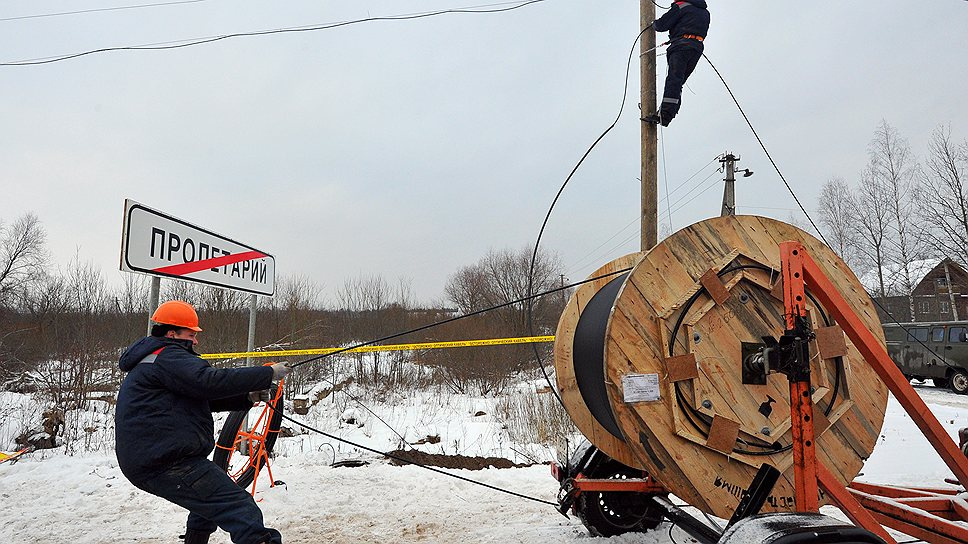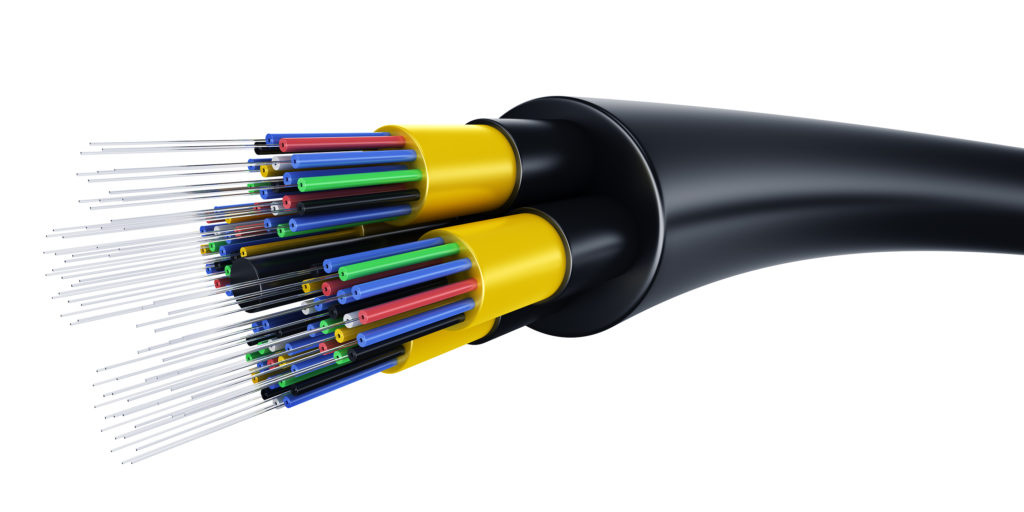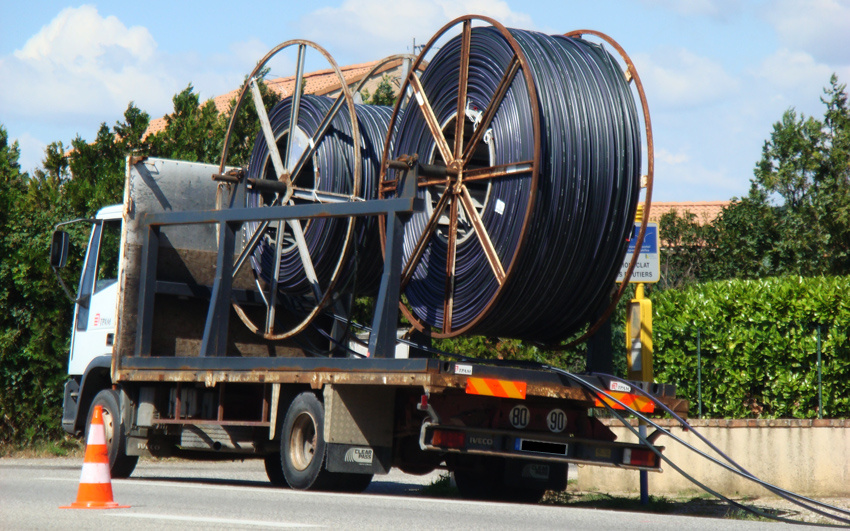Time of miracles, or Brakes for the end of the world

When they say "end of the world", they want to sell cornflakes,
but if they say “without panic,” then the matter is more serious.
Stephen King. "Storm of the Century"
It is said that the most optimistic pessimists believe in the happy end of the world. As applied to the telecom, this thought has a second bottom. All textbooks on telecommunications converge on one thing: when fiber-optic communication lines (FOCL) were used instead of copper lines, along with lasers, the industry had a long-awaited and almost eternal happiness, at least in terms of ensuring high throughput for almost instantaneous (literally at the speed of light) delivery of multiple information flows. So the industry began a time of miracles. Let there be light!
However, today the capacity of optical transport networks is rapidly approaching its limit. Further its expansion will require the organization of new fiber optic infrastructure and - new investments . We propose to talk about this below.
Racing to the limits
Meanwhile, nature regularly reminds us that there is nothing eternal in it. And the "limits of infinity" of optical transport is also not far off, although the date of the "end of the world" in fiber optic lines has been more than once pushed back.
Of course, such simple trouble, as a power outage, signalers have learned to overcome in the first place. The next trouble, namely the continuous reduction of the non-regenerative (without intermediate optical regenerators) gap on the main fiber-optic links with increasing transmission speed, was threatened by serious problems throughout the industry. Salvation came in the face of coherent systems of class N x 100 Gb / s. Dense wavelength compaction systems (DWDM) made it possible to cope with this terrible business trouble, providing a non-regenerative range of about 5–6 thousand km in land lines and more than 10 thousand km in submarine (depending on the modulation and coding schemes used) - QPSK, QAM, etc.).

Now on the queue - the physical limits of the bandwidth of the optical fiber, coupled with an increase in their delays in signal propagation. And this is against the background of the current and future growth of information flows caused by the development of the Internet of things and fifth-generation mobile communication networks (5G). It is worth recalling that 5G networks will have to have not only ultrahigh data transfer rates (up to 1 Gbit / s and higher), but also extremely low signal transmission delays (on the order of 1 ms or less). The strongest influence on the total value of the delay of the optical signal in the transmission system has a fiber length. Taking into account the fact that in the modern world there are practically no transport and backbone networks organized not on the basis of fiber optic lines, it is impossible to get ultra-small delays when it comes to something extended beyond the borders of countries, regions and even cities.
First of all, improving the efficiency of fiber optic links with DWDM significantly increases the delays directly in the elements of the DWDM network, where the signal undergoes various transformations. Also, in the DWDM channel layer, great attention is necessarily paid to the dispersion characteristics of the optical line, forcing to resort to dispersion compensators, which in their current performance introduce an additional delay. Fortunately, the use of coherent systems of class N x 100 Gbit / s allowed to refuse from dispersion compensators. This significantly improved the quality of the optical path and reduced losses in it, which had a beneficial effect on the limiting signal transmission distances. However, contrary to established opinion, the speed of propagation of an optical signal in optical fiber is significantly lower than the speed of propagation of electrical signals in copper communication lines and radio signals in the atmosphere *.
Actually, therefore, the ITU-T and developed recommendations on acceptable levels of delay. In most cases, it should not exceed 150 ms in one direction, which is quite acceptable, for example, for VoIP. Delays from 150 to 400 ms can also be acceptable if you take into account economic characteristics (first of all, the cost of a call).
Thus, from the point of view of minimum delays, modern fiber-optic lines cannot be considered as something special, which will significantly affect the physical and logical topologies of optical transport networks of the future. Even today, the growth dynamics of land and undersea cable networks is different - due to the difference in the cost of the right of way and construction, as well as the signal delays introduced.
"Death Fiber"?
The arrival in the communications industry of such global “troublemakers”, like Google and Facebook, created an additional incentive for the development of optical infrastructure infrastructure for the transfer of the continental and intercontinental classes with the ultimate bandwidth “for growth”, taking into account the very high growth rates of Internet traffic in general and video traffic share in it in particular. Therefore, the industry literature is full of triumphant reports about the launch of new lines, the next capacity records, the creation of international consortia for laying new Transoceanic submarine cable systems, etc.
The rapid dynamics of the ICT industry also led to the “death of the fiber”, since it became clear that the day was not far off when the development of communication on the basis of fiber-optic communication lines would fall into the physical limits of the transmission capacity of optical lines. And this means that it will be impossible to do anything new on the already-laid fiber-optic lines except to seal them to the maximum, and new cables should be laid, which is very expensive. All sorts of technological improvements have made today the "usual" ability to create communication systems that allow transmitting a stream of 100 Gbit / s and even 400 Gbit / s (4 x 100 Gbit / s) over a single optical carrier ("lambda"). However, the matter further stalled, because the empirical limit of spectral efficiency for such optical systems is approximately 5 bit / s / Hz and it is almost reached, which results in a single optical fiber having a maximum throughput of about 25-50 TBod, depending on the optical bands involved. However, the practical limit of the symbol rate of transmission over a single optical fiber, determined by the physical characteristics of the material used, is now 12–25 TBd, depending on the type of modulation, etc.

With the advent of 100 Gb / s systems with coherent reception, the marginal efficiency of using independent parameters of light emission (phase and polarization) was achieved, and the complication of modulation will inevitably lead to a significant drop in the transmission range **. That is, the problem of non-regenerative range arises again. However, new successes in DWDM systems can be achieved by channel compression, expansion of the spectral range (i.e., selection of other opto-transparent materials), more sophisticated modulation and detection methods (called probabilistic ones), as well as the use of “photonic crystals”, multi-heart fibers, etc. It is not difficult to see that most of these decisions involve the organization of new fiber optic infrastructure and, accordingly, new investments. Is that wise even with modulation techniques.
Thus, in the near future, serious changes will begin in the entire long-distance communications sector, due to the exhaustion of the resources of the laid cable lines. This creeping process of exhaustion of the capacity of the inherited optical infrastructure, coupled with falling tariffs and margins of the backbone business as a whole, in the coming years can create a new intrigue in the development of this segment and launch the demand-offer swing. The expected result is the intensification of work on the compaction of an existing optical fiber and the construction of new optical links of all classes.
So, gentlemen, do not panic!
* Salifov I. Calculation and comparison of transmission media of modern backbone communication networks by the criterion of latency (delay). T-Comm № 4 2009 p. 42
** Treshchikov V., Naniy O., Leonov A. Features of the development of high-capacity DWDM systems. T-Comm № 9 2014 p. 83
Authors publication:
Alexander GOLYSHKO, Systems Analyst, Technoserv Group of Companies
Vitaly SHUB, Deputy General Director, Telecom business area, IPG Photonics Russia (IRE-Polyus)
The article was published in the journal "X" .
')
Source: https://habr.com/ru/post/333602/
All Articles